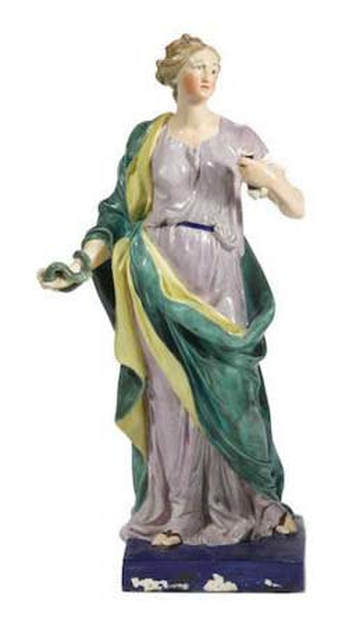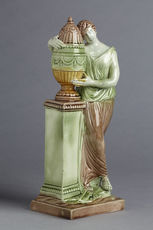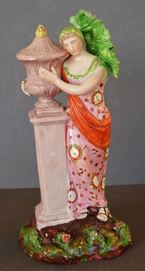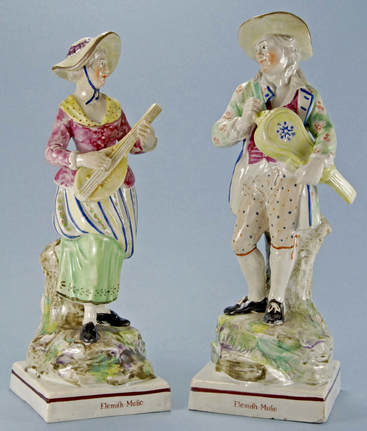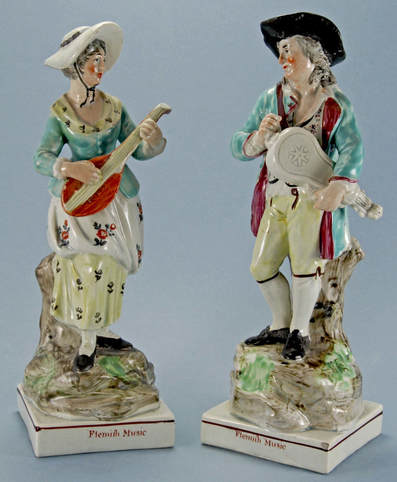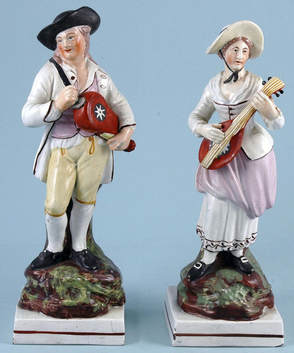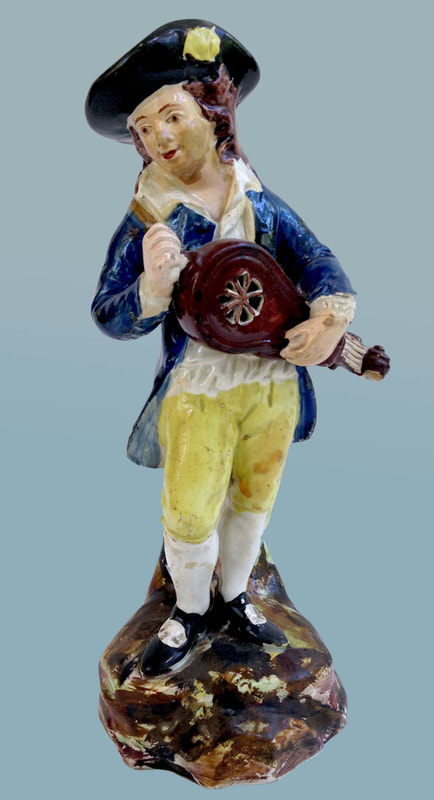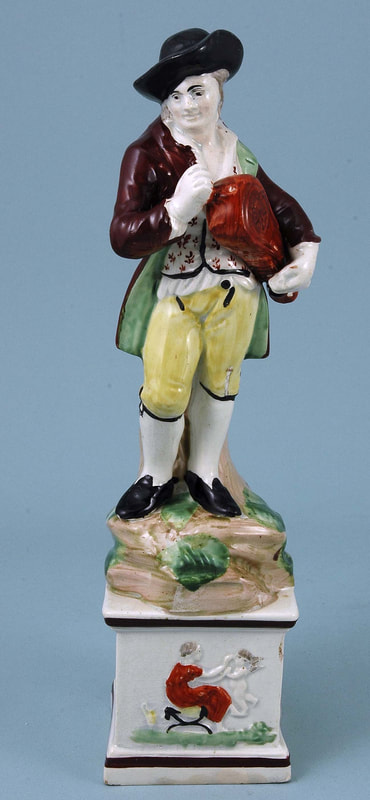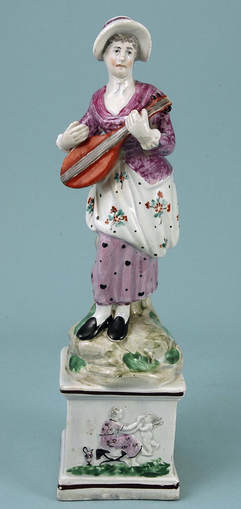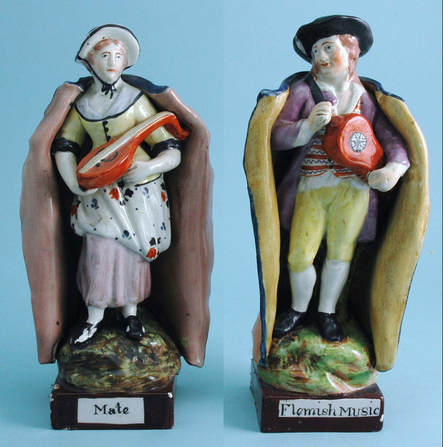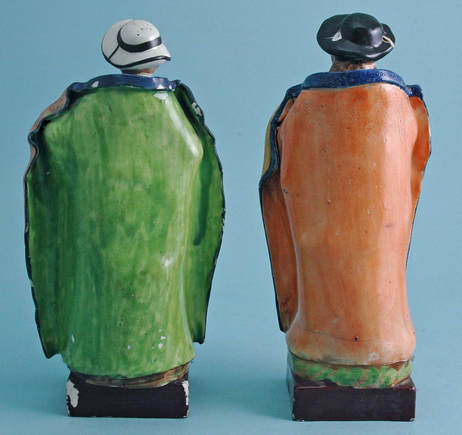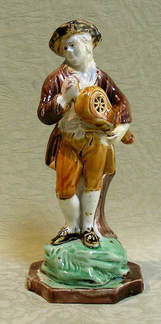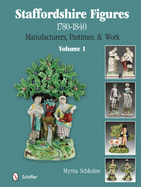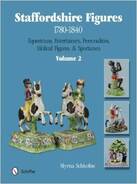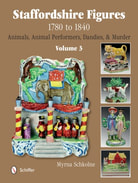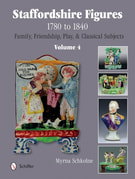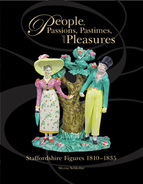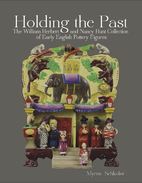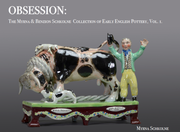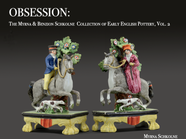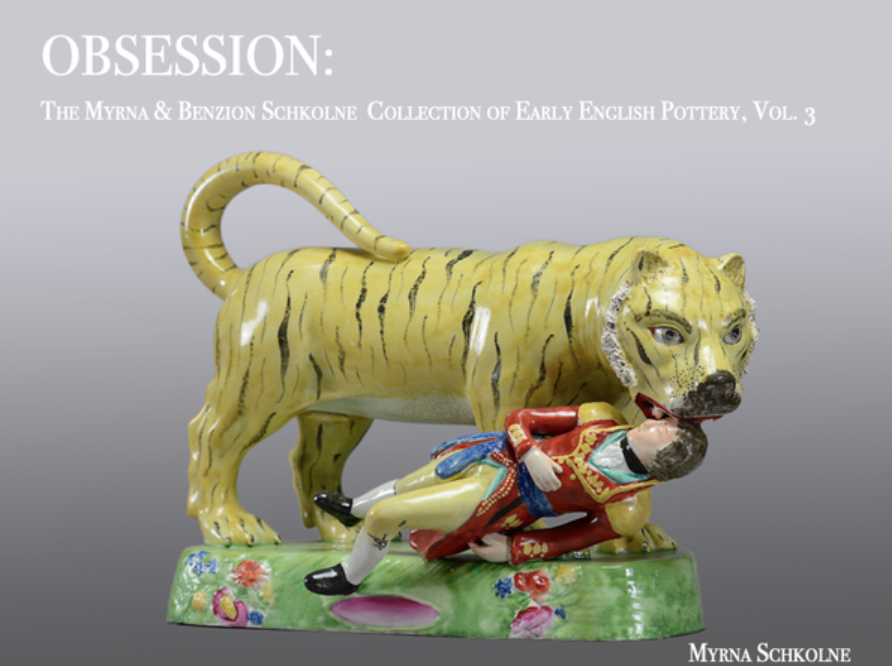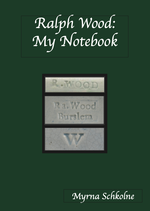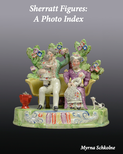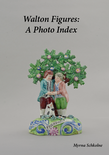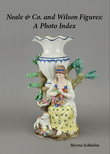Recently, a collector sent me a photograph of shelves housing his and his wife's treasures. The shelves, beautifully painted in an dusky turquoise shade, were stacked with interesting books. Guarding them were figures, arranged in rows in front of the books. Among them were very many figure of Charlotte at the Tomb of Werther, lined up alongside each other. The result was stunning.
Figures of Charlotte at the Tomb of Werther are among the most attractive of the early classical figures, all of which, sadly have lost favor with collectors who want the cute and colorful (even when very restored) rather than the serenely beautiful (even when very gorgeous). Charlotte at the Tomb figures are consistently rather fabulous. Each oozes the tragedy it portrays. Assembled together, these hauntingly beautiful artifacts are an interesting ceramics study. Their variations and their similarities point to who might have made them and when.
If you were to assemble a collection of one figure form, what would it be? My choice would be Flemish Music figures. They are tranquilly beautiful, and small variations abound that pique my curiosity. When found in pairs, the figures gaze into each others' eyes with love that transcends time.
Flemish Music figures can be traced back to Ralph Wood, who made the earliest of these figures, best we know. This pair is impressed "Ra. Wood Burslem" beneath.
| Although imitation is the sincerest form of flattery, subsequent potters thought they could improve on the original model, so they tweaked it at least a little. The figure alongside has a different face--jolly rather than serene. Also, his hurdy-gurdy has openings in the soundbox (note the cutouts surrounding the star like central motif on the hurdy-gurdy.) |
The variations in Flemish Music figures are numerous, and you can see other examples of these figures in Staffordshire Figures 1780-1840 Vol. 1 and on earlystaffordshirefigures.com, the site that supplements the book. This blog posting has merely skimmed the surface when it comes to Flemish Music figures, but it reinforces how much can be discovered by drilling down into one particular subject. Focusing in this way is so very rewarding, and along the way you can build a collection that is unique, aesthetically pleasing, and mentally satisfying. What more could a true collector want?
